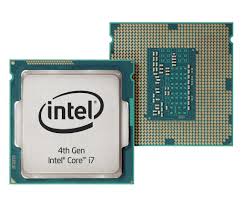The speed of your computer actually depends on many factors. It isn’t just about how much RAM is present or the speed of your processor; there are certain other aspects as well and surely one of them is the speed of your motherboard’s Front Side Bus, in short, the FSB. Since that it connects the processor to the memory unit and other peripherals via the chipset, it serves as the main connection path and hence is also called the ‘system bus’ or ‘processor bus’.
The Front Side Bus (FSB):
The front side bus, like mentioned, is the electrical-wired data path which typically is bidirectional (data can transfer in both sides at once) and transfers data between your system’s processor and the motherboards chipset (Northbridge in case of Intel motherboards). To this chipset all the other buses like the PCI Express, memory buses, and AGP bus and so on are connected; thereby your computer components communicate with your processor.
Also measured in Megahertz or Gigahertz, the speed of the system bus (or) Front Side Bus is never equal to that of the processor speed; at least for now! Normally the Front Side Bus operates at speeds between 66 MHz and 800 MHz; with the most recent motherboards’ offering FSB speeds up to 800 MHz. Also it can be observed that their speeds are always in a certain ratio. Depending on how close this ratio is, the better performance you can normally expect.
The reason is simple; it is because the processor has to wait for the FSB, for data transfer to take place. The faster the front side bus is, the better your system will perform; and if the FSB speed is too low compared to your processors, it really is a bottleneck!
While the processor speed is somehow dependent on the speed of the FSB, the FSB speed is in turn depends on the width of the bus (this is true for all the buses); which specifies the number of bits of data that can be transferred per each clock pulse.
Conclusion:
The Front Side Bus widths of many modern CPU including all the Pentium Series, Celeron, AMD Athlon, AMD Athlon XP, AMD Athlon 64 and so on is 64 bit. In modern computers, there is also a back side bus which connects the processor to its cache memory. So now that you know how the front side bus speed and FSB bus width affects performance of your computer, make sure your next motherboard is the best!

